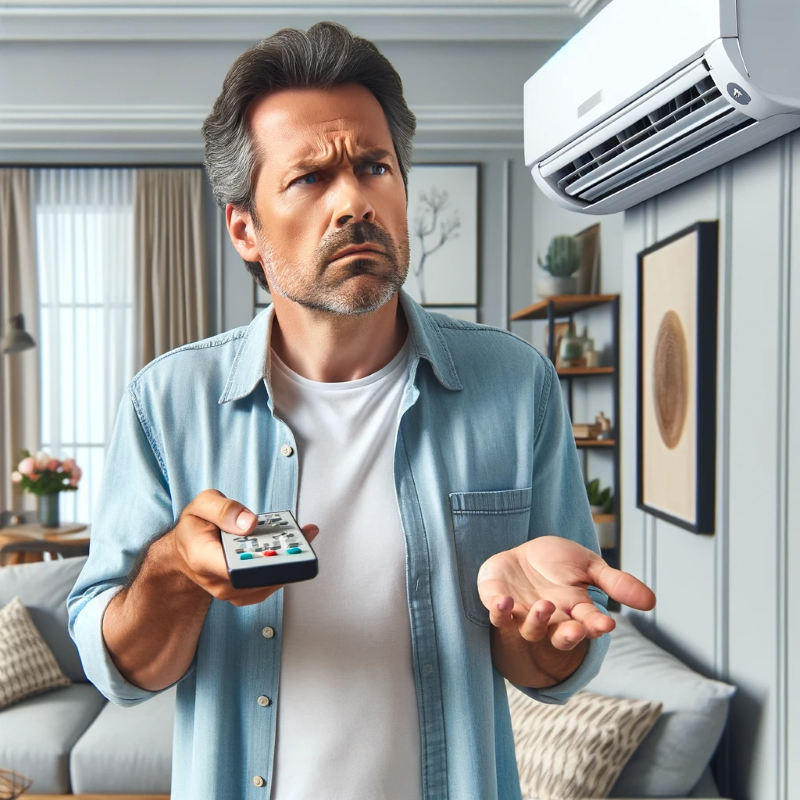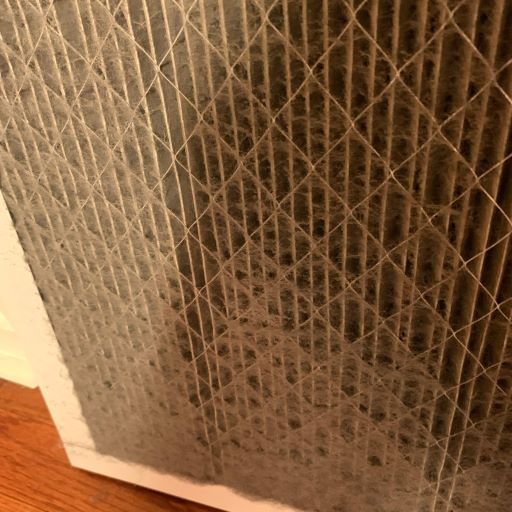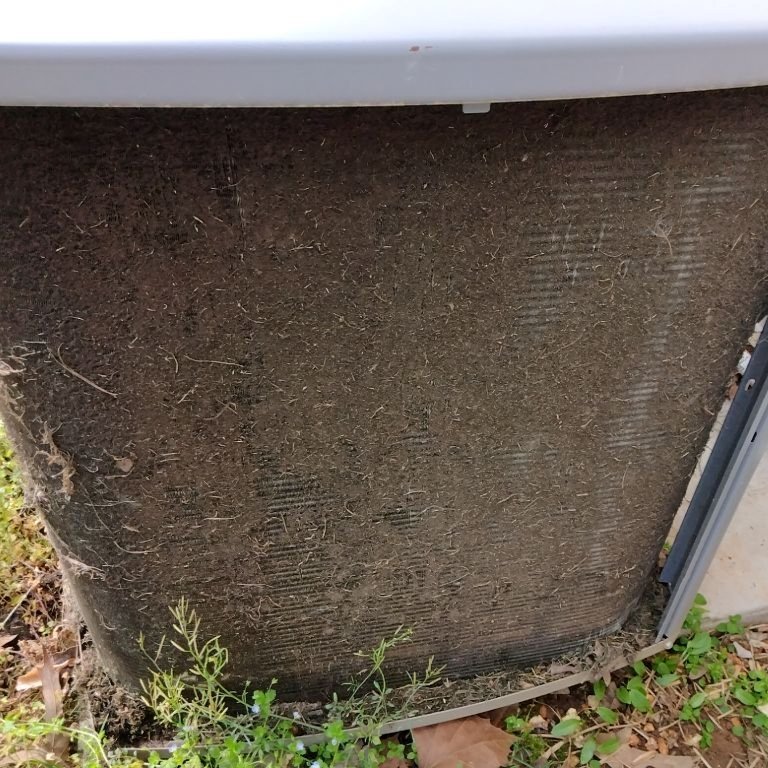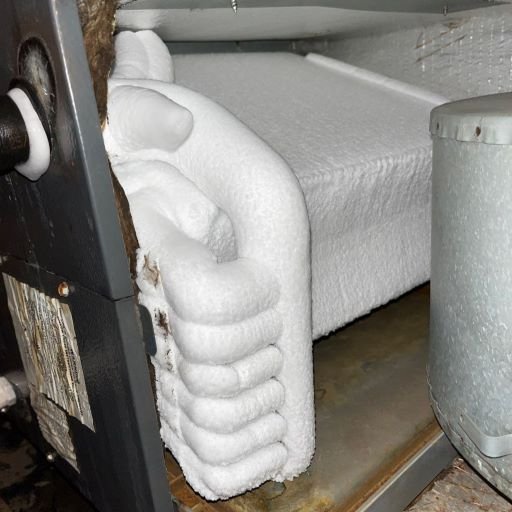Why is My AC Not Blowing Cold Air?
2025 Update: Why Is Your AC Not Blowing Cold Air?
If your air conditioner isn't blowing cold air in 2025, you're not alone. With updated refrigerant standards, aging equipment, and extreme temperature swings becoming more common, homeowners are experiencing AC issues earlier and more frequently in the season.
Key 2025 Factors to Consider:
Refrigerant Phaseouts: Older systems using R-22 or even R-410A may struggle to cool properly due to refrigerant scarcity or incorrect retrofitting. New units in 2025 now use low-GWP refrigerants like R-454B or R-32, and improper handling during servicing can impact cooling performance.
Smart Thermostat Conflicts: A growing number of homes now use Wi-Fi thermostats. Firmware updates or connectivity issues can override or miscommunicate cooling settings, leading to lukewarm airflow.
High Static Pressure in Ductwork: Increased home insulation and sealed environments can unintentionally raise static pressure, reducing airflow and cooling effectiveness—especially in multi-zone or variable-speed systems.
Dirty or Blocked Coils (Still a Top Issue): Despite technological improvements, outdoor coil clogging from pollen, cottonwood, and debris remains a top reason for poor cooling. In 2025, coil sensor diagnostics are more accurate—but often ignored until failure.
Heat Wave Demand Issues: During peak heat events, even well-maintained systems may lag due to excessive heat gain or overloaded utility grids. Energy-saving features in newer AC units may reduce compressor runtime during these spikes.
If your AC is blowing warm or room-temperature air, read on below for a full troubleshooting guide. But if your unit is over 10 years old or still uses phased-out refrigerants, it may be time to explore replacement options that meet 2025 energy and environmental standards.
Is your central AC not blowing cold air?
During the sweltering heat of the summer months, a malfunctioning air conditioner can be both uncomfortable and hazardous for your health.
That’s why you need to identify the potential cause of the problem as soon as possible to get your air conditioner running again. The more information you have, the better you’ll be able to address the issue and return to living comfortably.
Not Blowing Cool Air? What causes it?
Whether you have a dirty air filter, a refrigerant leak, a frozen evaporator coil, or otherwise, you need to know the warning signs. A common complaint following the installation of new HVAC systems or repairs involving the thermostat is that your system is actually blowing warm air. This is typically a wiring problem causing your auxiliary heaters to come on when the system is in cooling mode. This will definitely cause your system to blow warm air. Today, let’s take a look at the most common issues with home air conditioners and help you get your cold air blowing again.
Your Thermostat Settings are Incorrect
If your home is hotter than it should be with your air conditioner blowing, your first trip should be to the thermostat. Sometimes, thermostats that run on batteries may lose power suddenly. Once you’re sure it’s in working order, make sure you have it set to blow cold air. Some thermostats have settings for cool, warm, and fan. Double-check that nobody in your home has accidentally changed it from its usual thermostat settings.
Once your AC unit kicks on again, set it to a lower-than-usual temperature setting and give it a few minutes. Then, place your hand over your nearest air vents and check to see if it’s blowing cold air. If it works, you’re in luck – you don’t have to read any further! Otherwise, you’ll need to continue reading for more troubleshooting tips for your air conditioning system.
Replacing your thermostat
Many homeowners are comfortable changing their thermostats. A common mistake is not buying a thermostat that matches the capability of the system. This could limit the capacity of your system or prevent it from properly cooling. Straight cool air conditioners and furnaces will have a different thermostat than a heat pump system. Also, miswiring the thermostat will cause is to malfunction like blowing warm air when in cooling mode.
Very often homeowners prefer simple easy-to-use thermostats. Most of the higher-efficiency heating and cooling systems are multi-staged. A simplified thermostat may not be compatible with these AC units.
Use caution when replacing your thermostat
If you choose to replace your thermostat, be sure to closely follow the manufacturer's instructions. Many homeowners experience system shutdown after replacing their thermostat. Crossed wires can blow fuses, burn up transformers, and even damage control boards. This leads to much more costly repairs.
You Have a Dirty Air Filter
Your central air conditioning system relies on easy access to circulated indoor air to return cooled air to your home. The system's indoor air return system has an air filter designed to remove airborne particles and prevent dust and debris from returning to your home through your air ducts. But if you haven’t replaced your air filter recently, your fan coil blower motor could shut down after overheating when failing to suck in enough air.
It’s critical to check your system's air filter as often as you can. If you can’t see through to the other side of the air filter or if it’s turned a gray or brown color from collecting too much debris, you may need a brand new one. Some clogged filter brands, though, are washable – this means you can scrub it clean and put it back into the air conditioner unit to try again.
Not just a cleanliness issue. It can cause damage.
Dirty air filters may also cause your evaporator coil to freeze up. If you find that you have dirty air filters, you may have to wait for the evaporator coil to thaw before you begin to feel cool air blowing again.
A quick way to check if this is the case is to go to your indoor air handler unit and listen to hear if the blower fan is running. If it is running and not blowing air out of your vents, your evaporator coil may be frozen solid. You will want to contact an HVAC professional if this is the case.
A dirty filter equals a of dirty coil
Failing to regularly change the filters in your AC system could also result in a dirty indoor air coil. Household dust and other airborne particles adhere themselves to the wet surface of your evaporator. This sets up conditions for biological growth and odors. Most importantly, it inhibits the cooling process. This stops your AC unit from removing the heat energy and prevents your system from cooling properly. This will result in higher energy costs.
You Have a Refrigerant Leak
Most people know the chemical coolant, also known as the refrigerant, that helps to create cold air: Freon. Freon flows through your AC’s indoor and outdoor coil, drawing heat energy and humidity from the air and releasing it outside. While you should only have to add Freon to your central air conditioner once, a refrigerant leak reduces the system’s ability to cool the air. If you discover a refrigerant leak in your central air conditioner, it has to be fixed ASAP. Otherwise, the problem will only get worse.
You need an EPA license
However, since Freon is a chemical regulated strictly by the EPA, only people with professional licenses are allowed to handle it. You’ll need to reach out to your local HVAC maintenance company to help you repair the leak and refill the coolant in your air conditioner to get it up and running again.
Do the routine HVAC maintenance
The refrigerant levels in air conditioners should be checked annually. A heat pump should be checked twice per year. Refrigerant leaks typically occur in the evaporator or condenser coils. Refrigerant leakage from these components or anywhere in the condenser unit is easy to find with a freon detector. This is also the best way to identify a faulty compressor.
The hard-to-find refrigerant leak
Leaks in the refrigerant lines (or line-set) can be difficult to identify, locate, and repair. The line set is copper refrigerant tubing that connects the outdoor condenser unit to the indoor portion of your HVAC system.
These lines are almost always routed through walls, crawlspaces, and attics. This may sometimes lead to additional costs to find the leak. Your HVAC technician may need to pump down all of your refrigerant and pressurize your system with nitrogen to find it.
Your Air Conditioner’s Condenser Coil May Be Dirty
During the coldest months of the year, professional HVAC technicians recommend protecting outdoor systems from snowfall and other debris that may go unnoticed for months. If your air conditioner is not blowing cold air, you should check your condenser unit to ensure it’s not covered in dirt, leaves, or other debris.
Keep the area clear
Another big cause of an air conditioner not cooling is vegetation or structures built too close to the outdoor unit. If you have vines growing around or inside of your AC unit, remove them quickly so they don’t grow and constrict the unit any further. Proper operation of the system relies on the unit's ability to transfer heat to the outdoor air. Also, maintain constant vigilance to prevent toys, towels, tools, and other objects from ending up on top of your air conditioner. Otherwise, it may not be able to operate at optimal capacity and could have worse problems down the road.
Problems a clogged condenser coil will cause
Every outdoor central air conditioning unit is comprised of two main parts: the condensing coil and the compressor. A clogged condenser coil will cause several issues including the following:
The air conditioner not cooling properly
Overheating and damage to the condenser fan.
Cooling system shutdown
Your Evaporator Coil is Frozen
Inside your central AC unit, you’ll find something called an evaporator coil. Evaporator coils are typically found within the fan coil cabinet – especially if your device is part of a heat pump system. As warm air flows into the evaporator coil, thermal energy, and humidity are removed. Then, the conditioned air is pumped back inside your home through the air ducts, making it cooler and less humid.
How to tell
There are a few ways to notice if you have a frozen evaporator coil:
Poor ventilation from the supply vents throughout your home combined with warm indoor air
Frost building on the copper tubing leading into the coil cabinet
Higher energy bills each month
Runoff condensate near your device in larger amounts than usual
Formation of frost on the external refrigerant tubing or outdoor unit
Another issue related to a frozen evaporator coil is the condenser. If your home air conditioner system is no longer blowing cold air and no other explanation is found, you should have this checked as well.
If any of these signs are present in your air conditioner, you may need to call in an expert. Replacing your air conditioning unit’s evaporator coil is something only trained HVAC professionals should handle on their own.
You Need to Call in an Air Conditioner Professional
Once the hot weather hits, you know you’ll need a powerful air conditioner in your home. If you experience your AC not blowing cold air, blowing hot air, or you feel the thermostat doesn’t match air temperature, you may find yourself and your family in a miserable condition within a few hours.







